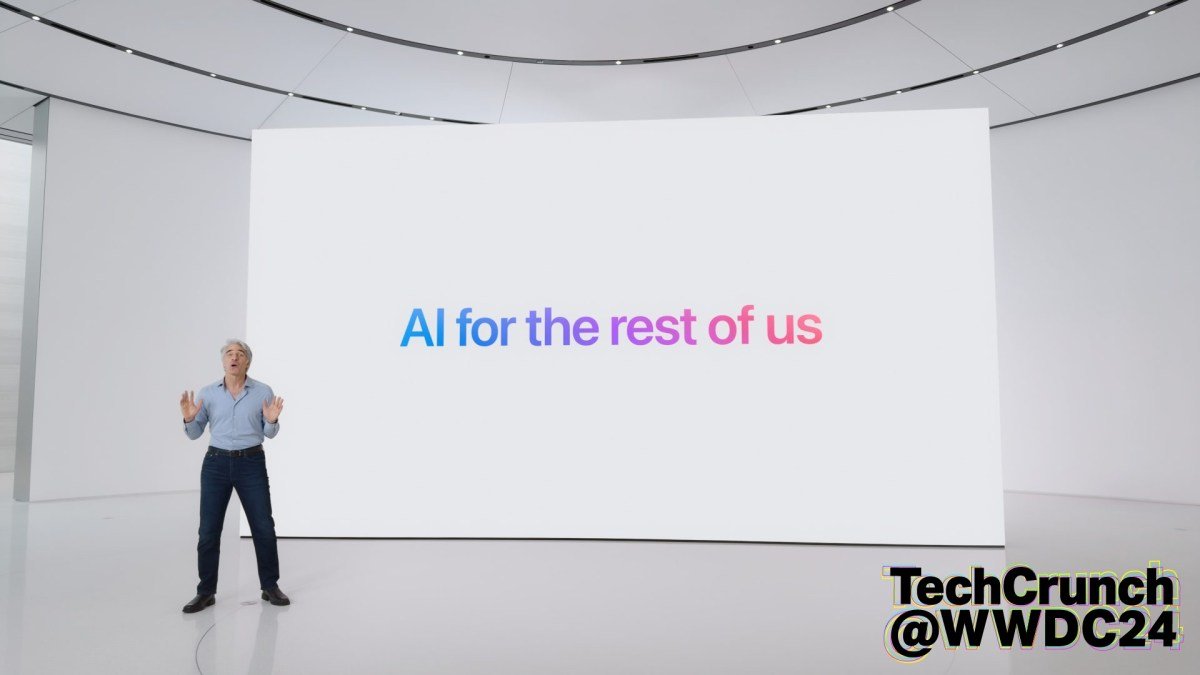In today’s world, it seems that the once-revered Artificial Intelligence has fallen out of favor with many consumers. With cases of AI chatbots producing incorrect answers, such as advising users to put glue on pizza, or Google’s AI Search feature suggesting eating rocks, it’s no wonder that AI has gained a bad reputation. Even Microsoft’s AI-powered recording feature, Recall, has been found to have concerning flaws and will now be deactivated by default.
In this climate, it may seem like a risky move for a company to release an AI-powered iPhone.
However, at the recent WWDC 2024 event, Apple unveiled their latest operating system, iOS 18, taking a more cautious approach. Instead of bombarding users with an overwhelming amount of AI features, the tech giant from Cupertino is carefully implementing AI in areas where it could prove to be helpful. This means that the technology won’t be integrated where it could potentially disrupt the seamless experience of using an Apple device.
Furthermore, Apple is rebranding AI as “Apple Intelligence” and incorporating new AI features in iOS 18 in a more practical manner.
Aside from some playful additions, such as AI emoji, Apple Intelligence will be woven into everyday apps and features. This will include tools for writing assistance and proofreading, AI-generated summaries and transcriptions, prioritized notifications, smart replies, enhanced search capabilities, improved photo editing, and a version of “Do Not Disturb” that intelligently understands which notifications are essential for the user to receive.

Credit: Apple
Together, these features may not be as exciting as a chatbot like ChatGPT, which can provide answers to almost any question, or tools that allow you to create AI photos in the style of different artists. However, Apple is setting a standard for what an AI-powered device should be capable of.
For now, this means that the technology should assist in making sense of lengthy texts, whether they be notes, emails, documents, or a barrage of notifications. It should also simplify the searching process using natural language queries, including searching within photos. Additionally, it should have the ability to transcribe audio, identify grammatical and spelling errors, rewrite text in different styles, and offer common response suggestions. Furthermore, it should be able to perform basic photo edits, such as removing unwanted objects or people from images. And lastly, it should have the capability to generate images on demand, but with strict safety measures in place.

Credit: Apple
When all of these features are presented in this manner, they almost don’t feel like AI at all. They simply feel like smarter tools.
This is a deliberate move on Apple’s part. The company has carefully selected use cases where it can address specific problems, rather than tackling the complications that come with AI chatbots. By narrowing their focus, Apple is ensuring that users receive expected results without any hallucinations and can minimize the potential dangers and safety concerns associated with AI misuse and engineering.
Moreover, Apple’s AI strikes a balance between being a source of guidance for users and being a tool for independent creation. The latter may not necessarily please creators, who make up a significant demographic for Apple products. Whether you want to make your writing more concise or summarize an email, Apple Intelligence can help. If you need to quickly reply to an email, a suggested response may also prove useful. But if you want to create an entire bedtime story out of thin air, Apple will direct you to ask for assistance from ChatGPT instead.
Credit: Apple
When it comes to image creation, Apple follows a similar approach. You can use Apple Intelligence to create images while messaging your friends, but the feature relies on its understanding of the people and subjects in your conversation. It presumably won’t suggest making AI-generated images if you’re discussing explicit or inappropriate topics. This same level of caution applies to adding images in other apps, like Keynote, Pages, and Freeform. Even in the standalone AI image-generation app, Image Playground, users are presented with guided suggestions and limited to select styles. In other words, you can’t create convincing deepfakes with Apple’s app.
If you ask Siri a question that it doesn’t have an answer to, it may suggest switching over to ChatGPT with your permission. This allows you to explore other chatbots and their wealth of information, if desired. But if ChatGPT makes a mistake, it falls on the chatbot, not on Apple.
In fact, much of what Apple offers is not a way to “chat” with AI. Instead, it offers the ability to leverage AI for specific use cases, where a quick click of a button can transform text or intuitively show you what you need to see, like an urgent notification from your mom rather than a coupon from DoorDash. AI is often running in the background or positioned off to the side as a tool, not the main interface for completing tasks.

Credit: Apple
This is where Apple Intelligence shines. It feels like a new layer added to your existing apps, where it solves everyday problems (or allows you to have some fun with emoji). It’s not trying to take over the world, as experts and fleeing OpenAI executives often warn about regarding the future of AI. Aside from a few features, such as Genmoji, which is purely for entertainment purposes, Apple Intelligence is practical and even a bit dull. And that’s precisely why it may work.
The beta version of Apple Intelligence will be available this fall.








